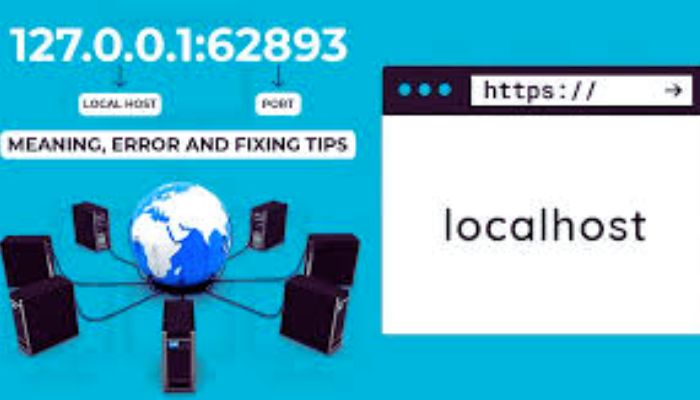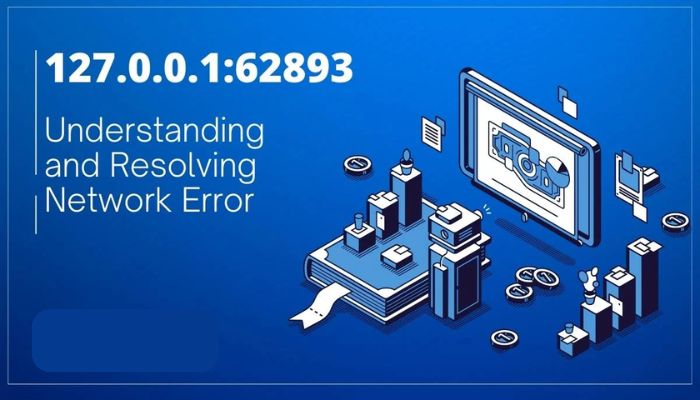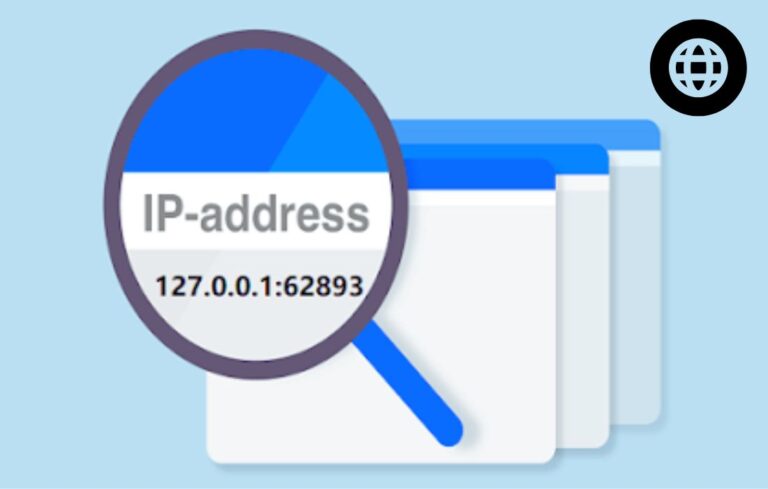In the digital age, understanding the intricacies of networking is crucial, whether you’re a developer, a network administrator, or just a curious tech enthusiast. At the heart of your computer’s network configuration lies the IP address “127.0.0.1”. This special address, paired with a port number such as “62893”, forms a cornerstone for various networking activities, particularly in software testing and development. This article delves deep into what “127.0.0.1:62893” is, how it works, and why it is pivotal for modern computing.
What is 127.0.0.1?
“127.0.0.1” is not just any IP address; it’s what’s known as the “localhost” or loopback address. Essentially, this means that data sent to this address is routed back to the same machine. It’s a concept that underpins much of how network testing and server configuration are performed. This address allows your computer to communicate with itself, testing and managing its own network services without transmitting data across external networks.
Understanding Ports in Computer Networking
Basics of Ports
Think of ports as doors or gateways on your computer through which all network communications must pass. They are integral to the process of differentiating between multiple types of traffic and directing it appropriately. Ports are identified by numbers ranging from 0 to 65535, allowing for a vast array of connections to be maintained simultaneously.
Range and Types of Ports
Ports are categorized into three ranges: well-known ports (0-1023), registered ports (1024-49151), and dynamic/private ports (49152-65535). Each range serves different purposes, typically designated by conventions or protocols. Port 62893 falls into the dynamic range, commonly used for specific applications set by users or applications on a local network.
Detailed Exploration of 127.0.0.1:62893
When an application on your computer uses the address “127.0.0.1:62893”, it communicates over the designated port 62893 on your local machine. This is crucial for tasks that require running a service accessible only to other processes on the same host or for testing purposes to ensure that the application behaves correctly before deployment.
Importance in Development and Testing
Using the localhost address for development allows for a controlled and secure environment. Developers can test applications, run servers, or simulate network environments without the risk of external disruptions or security breaches. This localized testing is faster and often more precise, allowing for rapid iteration and development.
Security Implications
While “127.0.0.1:62893” is primarily used internally, security considerations are paramount. Misconfigured network services listening on localhost can still present vulnerabilities, particularly if malicious software on the host machine attempts to exploit these services. Ensuring that applications are properly secured and only accessible as intended is crucial.
Common Misconceptions About 127.0.0.1
Accessibility
A common misconception is that the localhost address can be accessed just like any external IP address, which is not true. The loopback address “127.0.0.1” is designed to allow a computer to communicate with itself, and it is not reachable from any other machine on the network.
Use in Production
Though often associated with testing, localhost addresses are also used in production environments. They facilitate communication between services running on the same server, enhancing both security and performance by eliminating the need to transmit data over external networks.
Practical Applications and Case Studies
Developers often use “127.0.0.1:62893” for running web applications locally during the development phase. This allows for real-time testing and debugging without the need to deploy changes to a production environment. Such practices are common in dynamic programming environments where real-time feedback is essential.
Troubleshooting Common Issues
Issues with accessing services on “127.0.0.1:62893” can typically be traced back to configuration errors, firewall settings, or port conflicts. Ensuring that the port is not being used by another service, that the firewall allows traffic on this port, and that the application is configured correctly are the first steps in troubleshooting.
The Future of Localhost Addresses and Networking
As networking technology advances, the role of localhost addresses like “127.0.0.1:62893” is expected to evolve. With the growth of virtualization and cloud computing, new layers of complexity are added to network configurations, potentially expanding the roles and functionalities of localhost addresses.
Conclusion
“127.0.0.1:62893” serves as a vital component in the realm of networking, providing a secure and efficient way to develop, test, and manage applications. Its role is foundational in modern computing, where understanding and leveraging this address can significantly impact the development and operational strategies of software and network systems. As technologies continue to evolve, the significance of understanding such network interactions will only increase, underscoring the need for robust and secure networking practices.
FAQs About 127.0.0.1:62893
1. What is 127.0.0.1?
Answer: 127.0.0.1 is known as the “localhost” IP address. It’s a loopback address used in networking to allow a computer system to communicate with itself. It’s primarily used for testing and development purposes.
2. Why do developers use 127.0.0.1:62893?
Answer: Developers use this specific loopback address and port combination for testing applications locally, configuring server software, and running programs that should only communicate within the same host. The port number “62893” can be designated for specific services or applications.
3. Can I access 127.0.0.1:62893 from another computer?
Answer: No, you cannot access 127.0.0.1 from any other computer. It is designated for intra-machine communication only. To access services running on another computer, you would need to use the specific IP address assigned to that device.
4. Is it safe to run services on 127.0.0.1:62893?
Answer: Running services on this loopback address is generally safe as it restricts access to the local machine only. However, you should ensure that your local machine is secure from malware or other security threats that could interact with these services.
5. What should I do if I encounter a connection issue with 127.0.0.1:62893?
Answer: Check if the service intended to run on port 62893 is properly configured and actively listening for connections. Ensure that no firewall settings are blocking the connection and that no other service is using the same port.
6. How do I configure a service to use port 62893 on localhost?
Answer: Configuration can vary depending on the application or service. Typically, you would specify the port number in the application’s configuration file or settings, using “127.0.0.1:62893” as the address.
7. Can port 62893 be used for production services?
Answer: While it’s more common to use localhost addresses for development and testing, they can be used in production for services that need to communicate internally on the same server, such as inter-process communications.
8. What happens if port 62893 is already in use?
Answer: If port 62893 is already in use, any new service configured to use this port will fail to start. You would need to choose a different port or stop the other service that is using it.
9. Are there any alternatives to using 127.0.0.1 for local development?
Answer: Yes, other loopback addresses can be used (like 127.0.1.1), or you could use containerization technologies (like Docker) that allow you to specify and manage network settings more dynamically for local development.
10. Why is understanding 127.0.0.1:62893 important for network administrators?
Answer: Network administrators must understand how localhost addresses like 127.0.0.1:62893 work to effectively manage server configurations, troubleshoot local network issues, and secure the internal networking environment.

